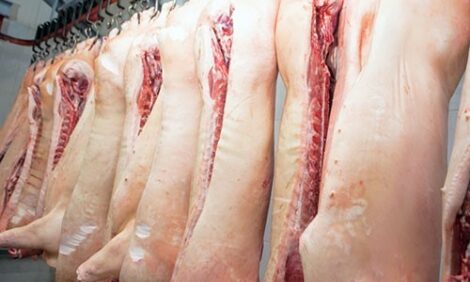



Antibiotics in Pig Feeds Increases Resistance
US - Antibiotics in pig feed increased the number of antibiotic resistant genes in gastrointestinal microbes in pigs, according to a study conducted by Michigan State University and the US Department of Agriculture's Agricultural Research Service.Published in the current edition of the Proceedings of the National Academy of Sciences, the comprehensive study focused on understanding the effects of conventional, in-feed antibiotics in US farms.
For decades, many producers of pigs, chickens and other farm animals have used antibiotics not only to protect their livestock from disease, but also to boost growth rates and enhance feed efficiency, a measure of how well animals convert feed into weight gains.
Scientists don't know precisely how antibiotics enhance growth rates and feed efficiency, but they are concerned that on-farm use of these medications may contribute to the development of strains of microbes resistant to conventional antibiotics, which are potentially harmful to humans and animals, said James Tiedje, MSU University Distinguished Professor of microbiology and molecular genetics and of crop and soil sciences.
"The growth of antibiotic resistance in pathogens is a huge challenge for society around the world," said Mr Tiedje, an MSU AgBioResearch scientist. "Studies to understand what contributes to the spread and what interventions can help control the problem are vital."
Both diversity and abundance of antibiotic resistance genes increased in the intestinal microbial communities of the pigs treated with antibiotics. Longer term studies are needed. Some of the genes found in the treated pigs were unexpected and usually linked to antibiotics not used in the study.
Microbial genes associated with production and use of energy by microbes increased in abundance in the antibiotic-fed pigs, which may shed light on how antibiotics increase livestock growth and feed efficiency. E. coli populations increased in the intestines of the treated pigs. Further study is needed to clarify this observation.
"To our knowledge, this study is the first of its kind to look at the collateral impacts of in-feed antibiotic use in farm animals, using a comprehensive approach to detect shifts in the function and the makeup or membership of the microbial community in the model animal's gastrointestinal tract," said Torey Looft, USDA researcher.








